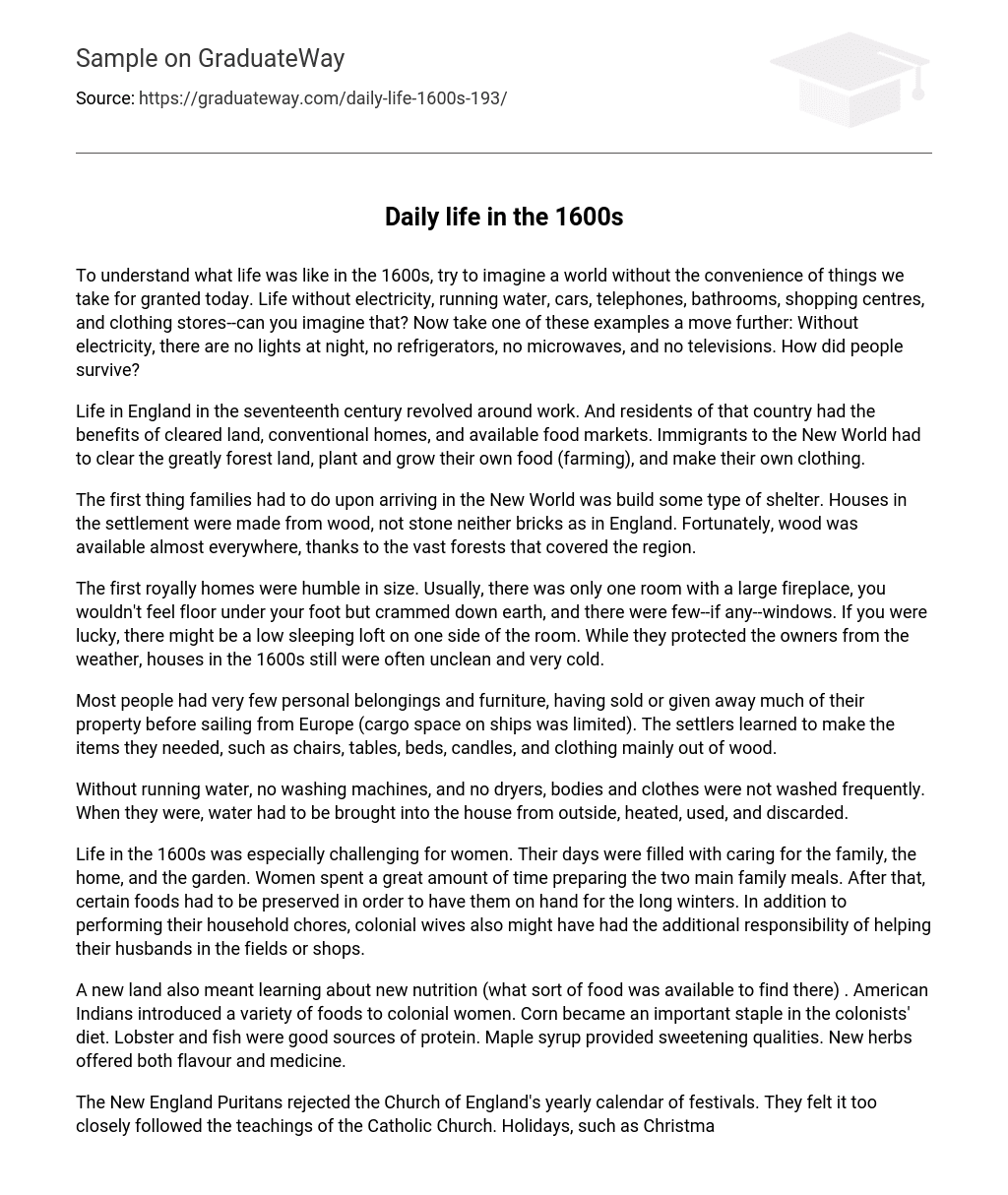Imagine a world without the comforts we now rely on, such as electricity, running water, cars, telephones, bathrooms, shopping centers, and clothing stores. Reflect on life in the 1600s without these basic necessities. Furthermore, think about living without electricity: nights filled with darkness and no source of light, no way to refrigerate or heat food with microwaves, and no televisions for entertainment. It must have been incredibly challenging just to stay alive.
Residents of seventeenth-century England had a lifestyle centered around work, enjoying the advantages of cleared land, traditional homes, and accessible food markets. However, immigrants to the New World faced the challenges of clearing forested land, engaging in farming, and producing their own clothing.
The initial task for families upon their arrival in the New World was constructing shelter. Unlike in England where houses were built with stone or bricks, settlements relied on wood which was abundant due to the extensive forests prevailing in the area.
The original royal residences were humble and compact, usually comprising of a solitary chamber with a generous hearth, an earthen floor instead of wooden boards, and sparse or absent windows. Occasionally, a small loft for sleeping might be situated on one side of the chamber. Although these homes offered shelter from the elements, they were frequently grimy and bitterly chilly during the 17th century.
Because of the limited cargo space on ships, European settlers had to sell or give away a significant portion of their property before starting their journey. This led them to have only a few personal belongings and furniture. To meet their needs for items like chairs, tables, beds, candles, and clothing, the settlers became proficient in crafting these goods mainly from wood.
Due to the lack of running water, washing machines, and dryers, both bodies and clothes were not washed regularly. When they did get washed, water had to be manually obtained from outside, heated, utilized, and then disposed of.
In the 1600s, women had to confront many difficulties in their daily lives. They were tasked with the responsibility of caring for their families, homes, and gardens. A substantial amount of time was dedicated to cooking the main meals for their families and preserving food for the winter season. Furthermore, colonial wives may have also supported their husbands in agricultural work or helping out in shops while still fulfilling their household responsibilities.
Colonial women in the new land had the opportunity to discover and adopt new sources of nutrition. American Indians played a significant role in introducing a diverse range of foods to these women. Corn emerged as a crucial element in the colonists’ daily meals, while lobster and fish served as reliable sources of protein. Additionally, maple syrup presented itself as a valuable natural sweetener, and various herbs were appreciated for their rich flavors and medicinal properties.
The New England Puritans disapproved of the Church of England’s annual festival calendar as it closely followed the Catholic Church’s teachings. Festivals observed in England, such as Christmas and Easter, were prohibited in the colony. Instead, the leaders of Massachusetts Bay would designate days for fasting or thanksgiving. Sundays were dedicated to solemnly attending church, listening to readings, lengthy prayers, and sermons (religious discourse).
Despite colonists’ dedication to building successful new lives, they managed to find time for social activities. Building homes and working together in crop harvesting became opportunities for socializing. Puritan women also gathered to discuss the Bible or participate in sewing bees. However, even in their social endeavors, the strong work ethic of Massachusetts Bay’s Puritan community persisted.





